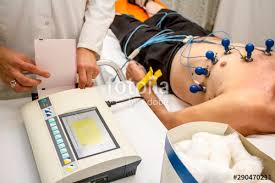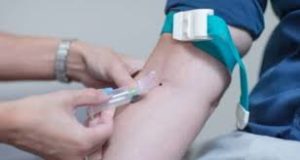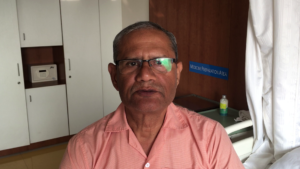
Gallbladder stone surgery is a very commonly done surgery. Except in rare circumstances, it is done by the laparoscopic method, means by a minimally invasive method. As a doctor, I understand that however common or routine a surgery is, anybody who is about to undergo the surgery always have their apprehensions. And I have learned from my patients, that anxiety is greatly reduced by knowing exactly what and how things are going to progress. Hence this exercise is to let the patients awaiting surgery, walk through the whole process from the surgeon’s view.
Once a decision is made regarding your Gallbladder stone surgery, its date and time, the surgical team contacts the Operation Theatre incharge to fix the timing of surgery. The OT incharge also updates the anaesthetist doctor regarding the date and time of surgery. The surgeon will also give a call to the anaesthetist to discuss what surgery is planned, what is expected during the surgery. The anaesthetist would like to know at this stage whether the patient is having any medication condition, which would need further investigation or optimization with medications prior to surgery. In a situation where such is the case, your surgeon will advise you to do so and that may need to delay the surgery if needed.
The OT incharge will make sure that the instruments are properly sterilized prior to your surgery, all the devices are working properly and all the materials needed for surgery are available in the OT during the surgery.
Once you are admitted to the hospital, the doctor on duty will see the reports of all your tests and follow the instructions of the surgeon. The doctor will also make sure that you have not taken food and water for 6 hours before the scheduled time of surgery. The doctor will then speak to your surgeon and inform him about your admission and all your prior tests. Your surgeon is also told about your temperature, pulse, blood pressure, sugar. As per your surgeon’s advice, the doctor on duty will complete other tests like ECG, blood tests, and X-rays.


The anesthetist doctor is also informed about your admission, your previous and recent test reports. The surgical site of the body is prepared for surgery by shaving that part of the body if needed. At this time your consent form will be signed for your consent to the surgery. While doing all this, the doctors on duty will try to boost your spirits by reducing the apprehensions of you and your loved ones. Everyone in the hospital understands your pre-surgery concerns.
You are shifted to the OT recovery room 10-15 minutes before the scheduled time of surgery. Again the nursing staff will see all your reports. They will also ensure that all the preparation is done properly. Your surgeon or anesthetist or both will come and visit you with the aim of relieving your anxiety. Finally, before being shifted to the operation theatre, you will be asked to go to the washroom to pass urine.
When you enter the operation theatre, you will see some of the OT staff preparing various instruments and equipment. You will be made to lie on the OT table. An intravenous line (IV line) is placed in your arm to give you the medicines. ECG lead, blood pressure cuff, and pulse-oxygen sensor are also attached to you at this time. They will monitor your pulse, BP, oxygen level, and heart activity throughout the surgery. The anesthetist, doctor, OT staff, and your surgeon will continue to talk to you throughout this procedure.
Your surgery isn’t performed just by your surgeon. An entire team is working during the surgery. Each surgery is a complex combination of multiple tasks performed by multiple team members, even if it is a very commonly performed surgery. Because of the minimal pain and rapid recovery after laparoscopic surgery, the procedure may seem simple, but in reality, it is not.
During surgery, in OT, 6-7 people are actively working to make the surgery successful. It includes an anesthetist doctor and a support staff for work related to anesthesia.
About four people are involved in the surgery process, including the surgeon. One person to control the camera, one assistant, and one person accompanies the surgeon to deliver the essential instruments from the trolley.
The person assigned to control the camera is in charge of the camera and guides the surgeon’s vision throughout the surgery. The second assistant assists the surgeon during the surgery whenever and wherever there is a need to make room for the surgery. The assistant assigned to the trolley helps in the exchange of equipment and providing essential items during surgery from the trolley.
In addition, a runner staff is kept on stand-by, who assists in providing any extra equipment or medications in case need arises during surgery. In order to give you the results you want, good and coordinated teamwork is required.
Once all the preparations are done, then the anesthetist doctor will put a mask on your face and ask you to breathe through the mask. Anesthetic gas will come from this mask, which will make you feel a little sleepy. Further medicines will be given to you through an IV line so that you are put completely to sleep. After you go into a deep sleep, the anesthetist will put a tube through your mouth into your windpipe. You will continue to breathe through this tube with the help of a ventilator throughout the surgery. The anesthetist will monitor the depth of your sleep and breath, and keep a watchful eye on the monitor. The monitor shows your pulse, BP, oxygen level, and heart activity. So now is your time to relax and sleep. After the surgery is over, the anesthetist will slowly bring you back to your senses.
Once you are under deep sleep and the anaesthetist says that everything is under control, the surgical team begins its work.
First of all, they will prepare the part of the body where the surgery is to be performed, ie your abdomen. It is disinfected by applying betadine solution to the abdomen. This is called painting, that is, painting that part with betadine. After this, the entire body is covered with a sterile drape except for the part of your abdomen. This is called draping, which separates the sterile surgical site from the rest of the body.
Next, the team prepares all the equipment. This includes the laparoscopic system and the energy source. A laparoscopic system includes a camera, a laparoscope, a light source cable, and an insufflating tube to fill CO2 gas into your abdomen. These are all pre-sterilized with a special method like ETO sterilization. An energy source is a device that helps complete the surgery without blood loss.
Once all the surgical equipments are ready, the surgeon will inject a small amount of anaesthetic solution into the site of the first incision. This helps us to keep you pain-free after surgery. Now, a small incision is made near your navel and a specific needle is inserted through this into your abdomen. After confirming the needle is in the proper position, the insufflating tube is attached to this needle and CO2 gas insufflation is started. Once enough gas is filled to make room for the abdomen, the needle is removed, and the first port is inserted through the same hole. The port is a hollow metal tube through which the laparoscope and other instruments can go inside your abdomen. Throughout the surgery, gas is continuously filled to keep the space.
It’s time to insert the laparoscope into your abdomen, and its live image appears on the monitor in front of the surgical team. Now the surgeon inspects the inside of the abdomen before proceeding with the surgery. Once this is done, three new ports are placed after injecting an anaesthetic solution at the site of the incision. These three new ports are placed under laparoscopic vision. This means, when the ports are placed, the surgeon can clearly see them entering the abdomen with the help of a laparoscope. Therefore, the surgeon can place them exactly where they are needed in your case.
Now, the true surgery begins. The person assigned to the camera shows the exact site of surgery with a clear focus. The assistant inserts a device through a port, grabs the gallbladder fundus (upper part), and pushes it toward your right shoulder. Now your surgeon can see the surgery site more precisely and clearly. Now he turns his attention to the tube(cystic duct) that connects the main bile duct to the gall bladder. With the help of an energy source, he cuts the tissue above the duct. By doing this the surgeon can clearly identify the cystic duct. This duct is a small and thin tube that connects the gallbladder to the main bile duct. Surgeons also properly identify the blood vessel that supplies blood to the gall bladder.
The surgeon then puts several clips on the cystic duct and blood vessel and cuts them. In this way, the gall bladder is separated from the main bile duct. Now the gall bladder is separated from the liver with the help of an energy device without any blood loss. The gall bladder is now ready to be removed from your stomach, along with the stones.
Watch this video to know about the surgery.
Now, the gall bladder is removed from the tummy through one of the ports. Sometimes a small plastic bag is used, also known as an Endo bag, to remove it. This bag is used when there is a possibility of spillage of stones while removing the gall bladder.
Finally, the surgeon will inspect the entire surgery site. Before completing the surgery, the surgeon will make sure that the clips are in place and that there is no bleeding. Now, looking through the laparoscope, all ports and equipment are removed. The gas is removed from the tummy by opening the valve of the ports. The 10 mm port sites muscles are closed with a stitch. No such stitch is needed at the 5 mm port site. Next, the skin wound is closed with absorbable stitch and surgical glue and covered with a bandage. The patient is now ready to regain consciousness.
Once the surgery is over, then the anaesthetist will make changes in the medicines in such a way that you will start regaining consciousness. Once he/she is sure you’re conscious enough to breathe on your own and swallow saliva, he/she will remove the tube placed in your windpipe. He/She will also make sure that you are comfortable, that you are not in pain and that you are breathing well. Once, we are sure that you are recovering well from anaesthesia, then we will shift you to the shifting bed. You are then taken to the recovery room on this bed.
In the recovery room, your pulse, BP, and oxygen are monitored for about 10 minutes. You will still be a little sleepy at this point. Therefore, a person will be there with you to constantly monitor your condition, and to comfort you. The surgeon and anaesthetist will also meet you to make sure you are recovering well. They will also talk to your relatives and tell them about your situation and allow them to visit you. All this is done to relieve you and your relatives from the worry of surgery.
Once you are reasonably awake you would be shifted back to your room. You would be allowed to rest for a couple of hours. The doctor-on duty will be there in case you need any help. After 2 hours, the staff will check your pulse, BP, and oxygen levels. And once they make sure you are well awake, you would be advised to sit. Gradually, as you feel comfortable water and then other warm liquids will be started orally. You would be advised to get out of bed, walk a few steps in the room under the observation of staff. At his point in time, all the IV drip and medications are stopped.
Once all this goes well, you would be advised to go to the washroom and pass urine. Initially, there may be a little bit of pain, but that reduces once you start moving around. In case the pain is more, further medications will be given by the doctor after a telephonic talk with your surgeon. All the medications are given orally once liquids are started and you do not have vomiting. Even if all is well, your progress will be updated to your surgeon by the on-duty doctor.
After about 4-5 hours of surgery, once you have tolerated liquids, a soft diet will be started. The surgeon also will make a visit to ensure all is processing well. Any of your apprehensions about going home will be addressed by him during this visit. You can have a shower the next morning, as the bandages are wash-proof.

Once you are relatively pain-free, tolerating liquids and food, have passed urine, you are ready for discharge. The discharge can be done on the same day for young patients with no other medical problems and coming from the same city. For all the rest, discharge is generally done the next day of surgery.
You will be called for a follow-up visit in a couple of days after discharge. The main aim is to ensure that you are doing well and check your wounds. The surgeon will check your wounds, clean them, and reapply the bandages. He will discuss about your diet and resuming activities after surgery. Any other questions of yours would be answered at this time.
Generally, you can resume a normal diet after a couple of days. A normal healthy diet is what you need. Unless your diet needs to be changed due to any other medical condition. The bandages are now to be removed by yourself, at home while bathing after 5 days. If for any specific reason, your wounds need to be rechecked, then your surgeon would specify at this time.
You also need to collect your biopsy report from the hospital. Generally, it will be available in 5-7 days post-surgery. The next visit would be a month later, just to make sure you are doing well. In between, if you have any issues you can schedule an appointment as per need.
ADROIT Centre for Digestive and Obesity surgery is performing various other advanced laparoscopic and all kinds of gallbladder surgery routinely. Our outcomes are par with international standards and our patient satisfaction level is great. This is the reason why Dr Chirag Thakkar is rated amongst the best doctors for gallbladder stone treatment by our patients. Click the below links to listen to our patient’s feedback.